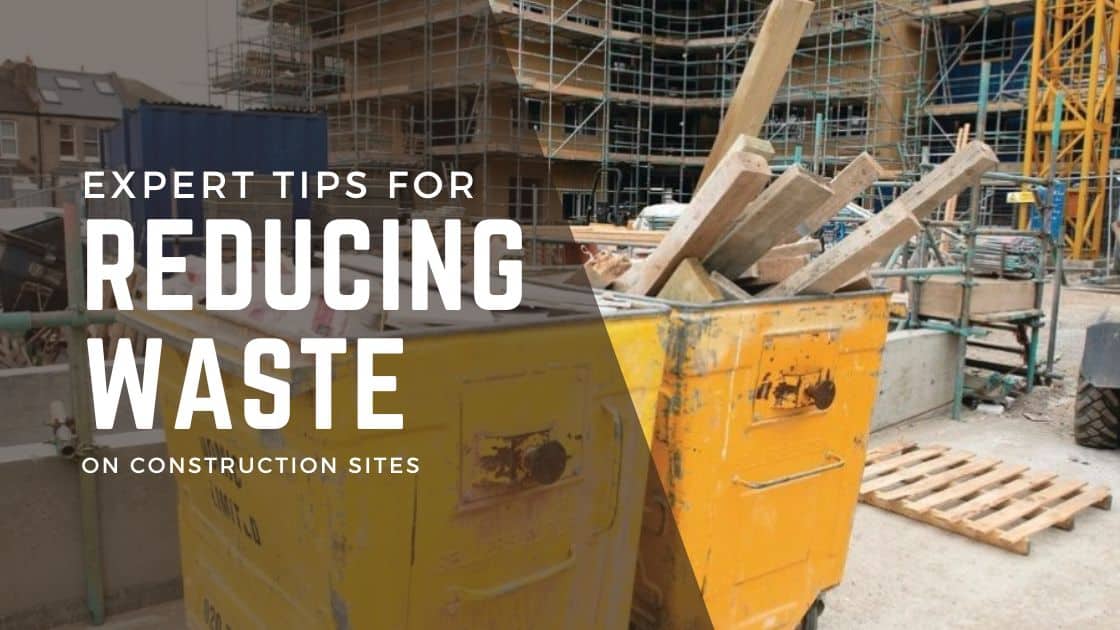
Account

The construction industry is known for generating significant amounts of waste, but with a focus on sustainability and efficiency, this can be minimized. Reducing waste not only benefits the environment but also cuts costs and improves overall project efficiency. At ibeam Construction Products, we are committed to promoting sustainable practices. Here are some expert tips to help you reduce waste on your construction sites.
Effective planning is the cornerstone of waste reduction. Start by developing a detailed project plan that includes accurate measurements and quantities for materials. This helps avoid over-ordering and reduces the likelihood of excess materials going to waste.
Create a comprehensive waste management plan that outlines procedures for handling, storing, and disposing of waste materials. Assign a dedicated team or individual responsible for monitoring and managing waste throughout the project.
Investing in high-quality materials may have a higher upfront cost, but it can significantly reduce waste in the long run. Superior materials are less likely to break or degrade during construction, resulting in fewer replacements and less waste.
Prefabricated components are manufactured off-site and assembled on-site. This method minimizes waste as components are produced in a controlled environment, reducing the chances of errors and material wastage. Prefabrication also speeds up the construction process.
Just-in-time (JIT) delivery involves scheduling the arrival of materials precisely when they are needed. This minimizes the risk of damage or deterioration from prolonged storage and reduces on-site clutter.
Set up designated areas for sorting and storing recyclable and reusable materials. Materials such as wood, metal, concrete, and cardboard can often be recycled. Reusing materials from demolition or previous projects can also cut down on waste.
Ensure that all team members are aware of waste reduction goals and practices. Provide training on efficient material handling, proper disposal methods, and the importance of sustainability. A well-informed team is more likely to follow waste reduction protocols.
Regularly monitor and measure the amount of waste generated on-site. This helps identify areas where waste can be further reduced and allows for adjustments to be made in real-time. Use this data to set benchmarks and track progress.
Leverage digital tools and software for project management and inventory tracking. These tools can help in planning material requirements accurately, reducing over-ordering, and optimizing the use of resources.
Work with suppliers who prioritize sustainability and offer eco-friendly products. Sustainable suppliers are more likely to provide materials that are recyclable, reusable, and sourced responsibly, aligning with your waste reduction goals.
Reducing waste on construction sites is essential for promoting sustainability, cutting costs, and improving project efficiency. By implementing these expert tips, you can make a significant impact on reducing waste and contributing to a greener construction industry.
At ibeam Construction Products, we are dedicated to supporting sustainable construction practices. Contact us today to learn more about our eco-friendly products and how we can help you achieve your waste reduction goals.
Your one stop solution for all your construction needs.
Tailored made solutions for your requirements
Prompt, Precise and Guaranteed timely delivery, every time.
Personalized assistance and expert guidance every step.
ibeam: Your Trusted Partner for Quality Building Materials
Streamline your procurement process with ibeam’s extensive product range, reliable supplier network, and seamless online experience. We deliver unbeatable value, top-tier quality, and on-time delivery—empowering contractors, builders, and traders across the Middle East and African countries.
+971 55 778 3469
Website & Digital Marketing: KVN Promos

